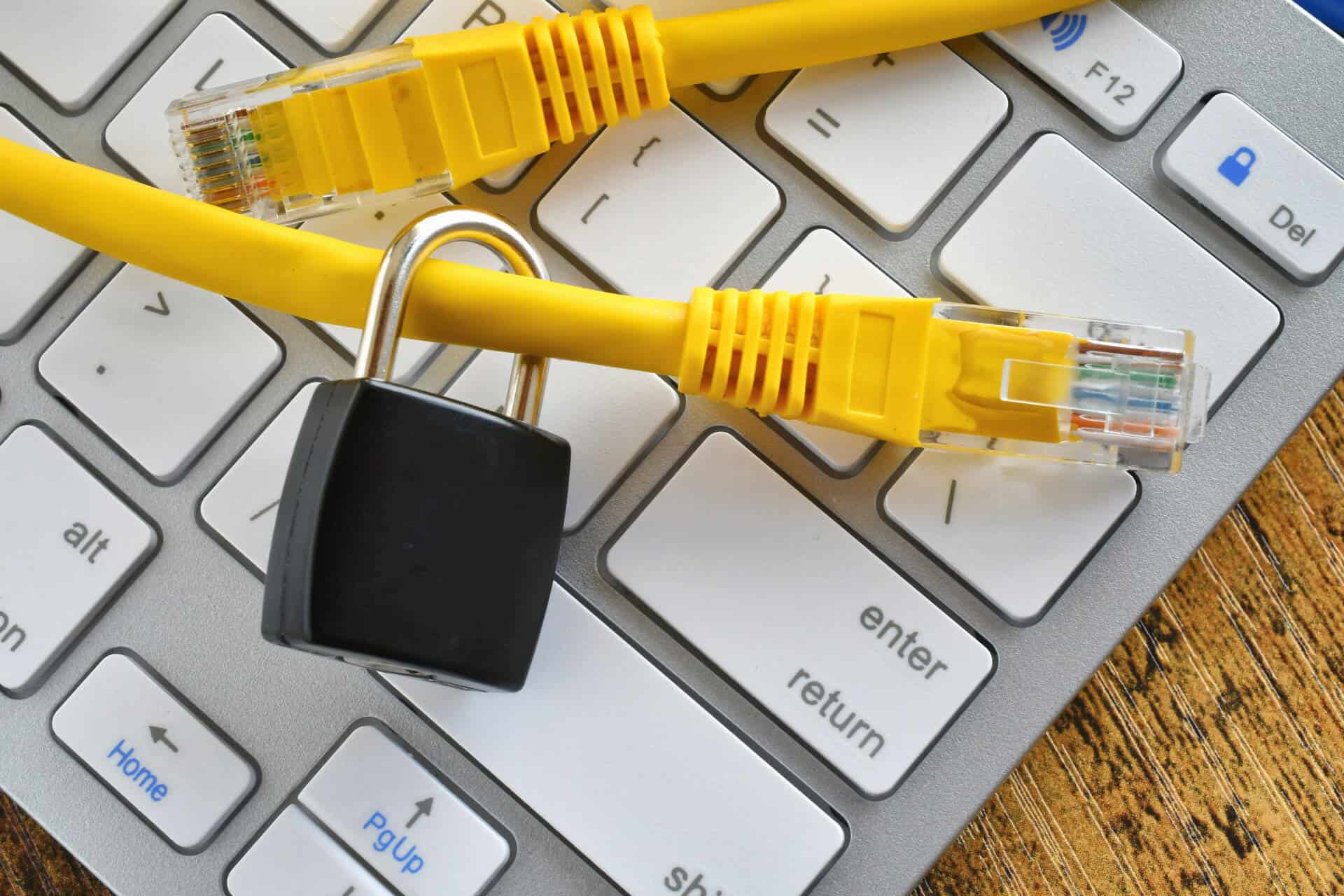As businesses and entrepreneurs embrace digital transformation, file sharing has become the lifeblood of modern communication and collaboration. Yet, with every file that moves across the internet, hidden threats lurk, waiting to exploit vulnerabilities in your data security.
To safeguard your sensitive information and maintain your competitive edge, it’s important to understand the unseen dangers embedded within file-sharing practices. We’ll cover these potential vulnerabilities below, so that you are well prepared to protect your data.
What is secure file sharing?
Secure file sharing involves transferring files using methods that protect your data from unauthorized access, including protocols like encryption, authentication, and controlled access to ensure only authorized individuals can view or modify the files.
But is file sharing safe? Yes, filing sharing is safe when it is done correctly, but awareness of the risks is essential.
9 Common Security Risks Associated with File Sharing
While file sharing can be secure, it depends heavily on the methods and tools used for data protection. Without the proper security measures, file sharing can become a weak point in your data protection strategy, exposing your business to potential threats from hackers, malware, and even insider threats.
Therefore, adopting secure file-sharing practices is not just an option but a necessity for businesses that value data integrity and confidentiality. Below, we have outlined 9 common security risks for you and your team to be aware of.
Data leaks and breaches
Data leaks are one of the most significant risks of file sharing, often resulting from human error or poor security practices. When sensitive files are mistakenly shared with unauthorized individuals, confidential information could be exposed that cybercriminals could exploit.
A data breach can damage your company’s reputation, lead to financial losses, and even result in legal consequences if it involves sensitive customer data, particularly personal data.
Malware Infections
Cybercriminals frequently target file-sharing platforms as a means to spread malware. This malicious software can be hidden in seemingly innocent files, only to infect the recipient’s computer once downloaded.
Malware can corrupt files, steal sensitive information, or even take control of an entire network. Businesses that do not have robust malware detection systems are at a higher risk of falling victim to these attacks, which can lead to extensive data loss and operational disruptions.
Lack of Control and Governance
Without adequate control and governance, it can be challenging for organizations to manage who has access to their files. In many cases, unauthorized users can easily access shared files if the settings are not correctly configured.
This lack of oversight increases the risk of sensitive information being mishandled or otherwise improperly used. Businesses must implement strict file access policiesto control their data and make sure that only authorized personnel can view or edit shared documents.
Unencrypted File Transfers
Encryption is one of the most effective ways to protect data during transfer. Unfortunately, many businesses overlook this critical security measure.
Sharing files through unencrypted channels makes the data vulnerable to hackers’ interference, who can easily decode unprotected information. By using encrypted file-sharing methods, businesses can ensure that even if a file is intercepted, it remains inaccessible to unauthorized parties.
Insider Threats
Whether they are intentional or accidental, insider threats pose a significant risk to file-sharing security. Employees or trusted partners with access to sensitive files may misuse that information for personal gain or inadvertently share it with the wrong person.
To mitigate insider threats, businesses should limit file access to only those who need it and regularly monitor file activity to detect unusual behavior.
Compliance Violations
Compliance with data protection regulations is a major concern for businesses, especially when handling sensitive customer information. Improper file-sharing practices can easily lead to non-compliance with regulations like the General Data Protection Regulation (GDPR) or the Health Insurance Portability and Accountability Act (HIPAA), resulting in hefty fines and legal repercussions.
To avoid these consequences, businesses must implement file-sharing solutions that provide secure data transmission and detailed audit trails to meet all regulatory requirements, including the GDPR.
Unauthorized Access
Weak passwords and inadequate authentication methodsare common causes of unauthorized access to shared files. Hackers can easily exploit these vulnerabilities to gain entry into file-sharing systems and put sensitive data at risk.
To strengthen security against unauthorized access, businesses should enforce strong password policies and consider multi-factor authentication.
Outdated Software and Vulnerabilities
Using outdated software for file sharing can expose your system to security risks. Older software versions often have vulnerabilities that hackers can exploit to gain unauthorized access to your files.
Regularly updating software and patching security holes is essential to protecting your data. By staying up-to-date with the latest software, businesses can significantly reduce their risk of data breaches and enhance their overall cloud security.
Insecure Public Platforms
Public file-sharing platforms, though convenient, often lack the advanced security features required to protect sensitive information. These platforms may store data on servers that are not adequately secured, making it easier for hackers to access your files.
To minimize risk, avoid using public platforms for sharing sensitive information and instead opt for secure, private file-sharing solutions.
Protect your data with our cybersecurity solutions
How Ignoring File Sharing Security Poses Risks
Neglecting file-sharing security can have severe consequences for businesses, such as:
- Financial loss: A data breach can lead to costly fines, legal fees, and lost revenue due to decreased customer trust.
- Reputational damage: A single security incident can harm your brand’s reputation, causing you to lose both clients and business opportunities.
- Legal issues: Failing to protect sensitive information can result in lawsuits, regulatory fines, and compliance breaches, ultimately jeopardizing your company’s future.
Additional reading: multi-layered security
Why Public File Sharing Increases Security Vulnerabilities
Public file-sharing platforms often lack comprehensive security features, making them easy targets for cybercriminals.
Cybercriminals may use these services to spread malware or gain unauthorized access to sensitive data. Relying on these platforms without additional security measures can put confidential information at significant risk.
How to Securely Share a File (Best Practices)
File sharing is an integral part of today’s digital workflows, but comes with significant security risks. Implementing best practices will help protect sensitive information from unauthorized access and cyber threats.
Below, we’ll discuss some of the most effective file sharing methods and security practices to keep your data safe.
Implement Encryption
When files are encrypted, only authorized users with the appropriate key can decrypt your data. It’s worth noting that decryption and encryption use distinct keys, while symmetric encryption uses a single key for both tasks.
Dropbox and Google Drive encrypt files with AES 256-bit when not in use, ensuring cloud security for users. This means that even if the transmission is compromised, only the keyholder can read an encrypted file.
Two-Factor Authentication
Two-factor authentication (2FA) secures your identity by requiring both a password and a phone code or authentication app, adding an extra layer of security to file sharing services.
This extra step makes it more difficult for a cybercriminal to access your file-sharing accounts if they obtain your password. Google Drive, Microsoft OneDrive, and most other secure file-sharing services support two-factor authentication.
Limit Access Control
Access control means that only authorized users have access to your files. Use role-based access controls to restrict file viewing, editing, and sharing to specific company roles in order to ensure data privacy and prevent unauthorized access.
Use Secure File Transfer Protocols
Use protocols such as Secure File Transfer Protocol (SFTP) or Hypertext Transfer Protocol (HTTPS) to send sensitive files. These protocols send encrypted data that cannot be read or modified, making them extremely useful for secure cloud storage and file sharing.
SFTP is generally preferred over email for data transfer to comply with data protection laws and ensure the protection of personal data.
Regularly Update Software
Regularly update your file-sharing software to keep hackers from exploiting security flaws. Setting up automatic updates will protect your system from new threats.
Software developers are constantly releasing security updates. Outdated apps can leave your data vulnerable to hackers.
Adopt Cloud-Based Secure File Sharing Solutions
Many cloud-based file sharing platforms provide end-to-end encryption, multi-factor authentication, and comprehensive access control. These platforms include Dropbox Business, Google Drive with G Suite, and OneDrive for Business.
These platforms benefit remote teams by allowing them to share files safely by using advanced cloud security measures. To ensure data protection, providers must comply with strict regulations such as the GDPR, PCI DSS, and HIPAA, which set standards for data privacy and security.
Educate and Train Employees
The majority of data breaches result from human error. Ongoing training and awareness programs can help employees learn how to safely share files, why data protection is critical, and what can go wrong if sensitive data is mishandled.
Employees must be able to recognize phishing emails, avoid suspicious links, and report security issues promptly.
Monitor and Audit File Sharing Activities
Continuously monitoring file-sharing activities makes identifying unusual or illegal file users simple. Most safe file-sharing services allow you to download, change, and share audit trails.
Regularly reviewing these logs enables you to detect security flaws early on and ensure file-sharing adheres to your company’s security policies.
Set Expiration Dates for Shared Files
If you only require temporary access to sensitive files, you can specify expiration dates or automatic deletion. As a result, private data is better protected, and fewer people will be able to access older files.
Backup Your Files
Regardless of how secure file sharing is, cyberattacks or accidental deletions can result in data loss. Regularly backup your files to prepare for a data breach, and keep them in encrypted locations to ensure their security.
Contact us today to see how we can help mitigate the risks associated with insecure file sharing
What Tools Can Help Ensure Secure File Sharing?
Below are some trusted platforms that can enhance your file-sharing security:
- Dropbox provides advanced encryption and security features, making it a popular choice for businesses looking to secure their file-sharing activities.
- Microsoft 365 offers robust file-sharing options with built-in encryption, data loss prevention, and user authentication features.
- iCloud Drive: Apple’s iCloud Drive offers seamless file sharing with end-to-end encryption, ensuring your data remains secure throughout file transfers.
Additional reading: cyber security risk assessment
Future Outlook on File Sharing Security Risks
As technology evolves, so do the threats to file-sharing security. Emerging trends and challenges include:
- AI-driven cybersecurity: Advanced AI technologies are being developed to more effectively predict and prevent file-sharing security breaches.
- Ransomware attacks: These cyberattacks are becoming more sophisticated, targeting businesses with weak file-sharing security protocols.
- Evolving encryption techniques: Continuous advancements in encryption methods aim to provide stronger defenses against unauthorized data access.
How CMIT Solutions Mitigate File Sharing Risks for Your Business
CMIT Solutions offers comprehensive solutions to help businesses improve their file-sharing security and comply with the general data protection regulations. From encryption to advanced threat detection, CMIT provides tools and strategies to safeguard your data against potential breaches.
Our managed IT services are tailored to meet the unique needs of each business, providing scalable solutions that grow with you. With CMIT Solutions, you can focus on what matters most—driving your business forward—while we support your data security.
Key Takeaways on File Sharing Security Risks
File sharing is necessary for modern business, but it poses security risks that must be addressed. Data breaches can be reduced with an awareness of the risks and by implementing safeguards such as encryption and two-factor authentication.
Using reliable tools such as Dropbox, iCloud Drive, and Microsoft 365 can also improve file-sharing security. Working with the professionals at CMIT Solutions can help ensure your company has the best tools and strategies for protecting sensitive data.
- Call us directly at (888) 530-5182.
- Online: You can also fill out our contact form.
Connect with us today to see how CMIT Solutions can offer the best information security with customized strategies to drive sustainable success.
FAQs
What is the difference between public and private file sharing?
Public file sharing often involves platforms that allow anyone with a link to access the files, making this process less secure and increasing the risks associated with file sharing. Private file sharing uses secured networks and requires authentication, ensuring that only authorized users can see or modify the files.
Can email attachments pose file sharing security risks?
Yes, email attachments are a common vector for malware and phishing attacks. Using encrypted email services and verifying the sender’s identity before opening attachments can help mitigate these risks.
How can I securely share sensitive files with clients?
To securely share sensitive files, use encrypted file-sharing methods, password-protected files, and platforms with robust security features like Microsoft 365 or Dropbox.
Are free file-sharing services safe for business use?
While free file-sharing services may be convenient, they often lack the security features to protect sensitive business data. Investing in secure, professional-grade file-sharing solutions for business use is recommended.






